Manufacturer: Asus
UK price (as reviewed): £87.98 (inc. VAT)
US price (as reviewed): $97.99 (exc. tax)
It's easy to forget that there are plenty of good-value B450 motherboards out there in the wake of scores of wallet-hitting X570 boards landing in the nine weeks since 3rd Gen Ryzen's arrival. Most are equally capable of running AMD's new CPUs, and today we're making the switch from our trusty Ryzen 7 2700X to the mighty Ryzen 9 3900X to test previous-generation motherboards. The first test subject is the Asus TUF B450M-Plus Gaming, a sub-£100 micro-ATX motherboard that ticks most boxes when it comes to an affordable board for those on tight budgets.
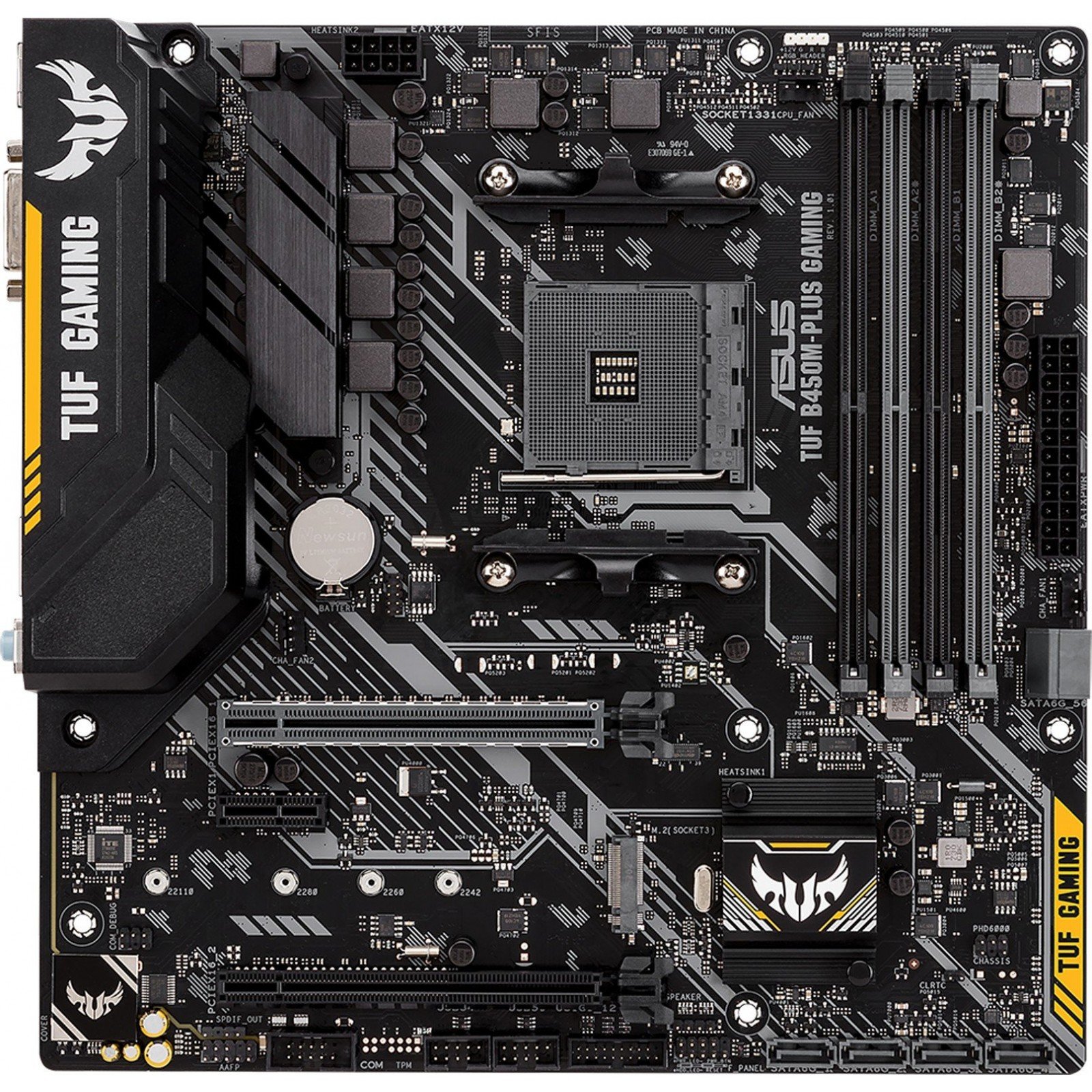
We'll obviously be flinging our 12-core CPU at it to see how those VRMs and heatsinks handle the current flagship mainstream Ryzen CPU, but the board would obviously be equally at home with something like a Ryzen 5 3600 or Ryzen 5 3400G, assuming you land a sample with a BIOS new enough to be compatible with any 3rd Gen CPU. Sadly, the board lacks USB BIOS Flashback, and our sample was running an older BIOS, forcing us to grab a 2nd Gen Ryzen CPU to perform the update - it's worth trying to get your retailer to confirm the BIOS version before purchasing or request that they ensure it is updated.
The form factor is really rather welcome, as only a handful of micro-ATX boards have been released for any AM4 chipset, and while the TUF B450M-Plus Gaming isn't exactly a flagship model, it has everything most enthusiasts need when shopping in this price range.
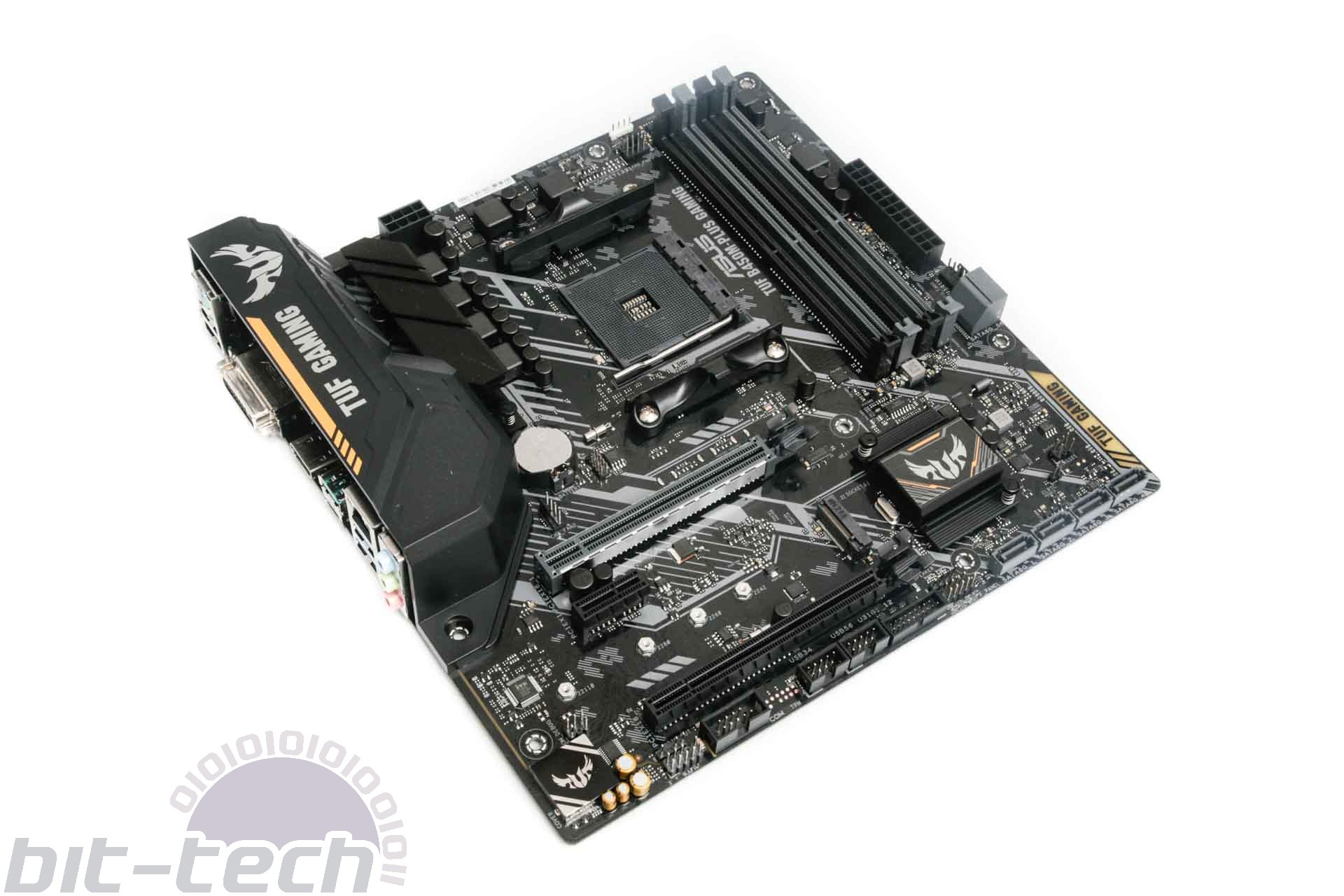
It's not a bad-looking board, with an I/O shroud covering those unsightly ports. Being micro-ATX and shaving a little PCB real estate from the lower end, the board loses some ports, but it still retains a 1x and 16x PCIe slot below the primary 16x slot. However, the former is poorly placed as it will be blocked the instant you install a graphics card (unless water-cooling). It's also worth noting that the lower two PCIe slots are only rated at PCIe 2.0 as well, but you can use that lower 16x slot for a sound card or other expansion device, even if it's just a 1x card. Still, it's a poor design choice by Asus given how few situations will see the 1x port actually be usable.
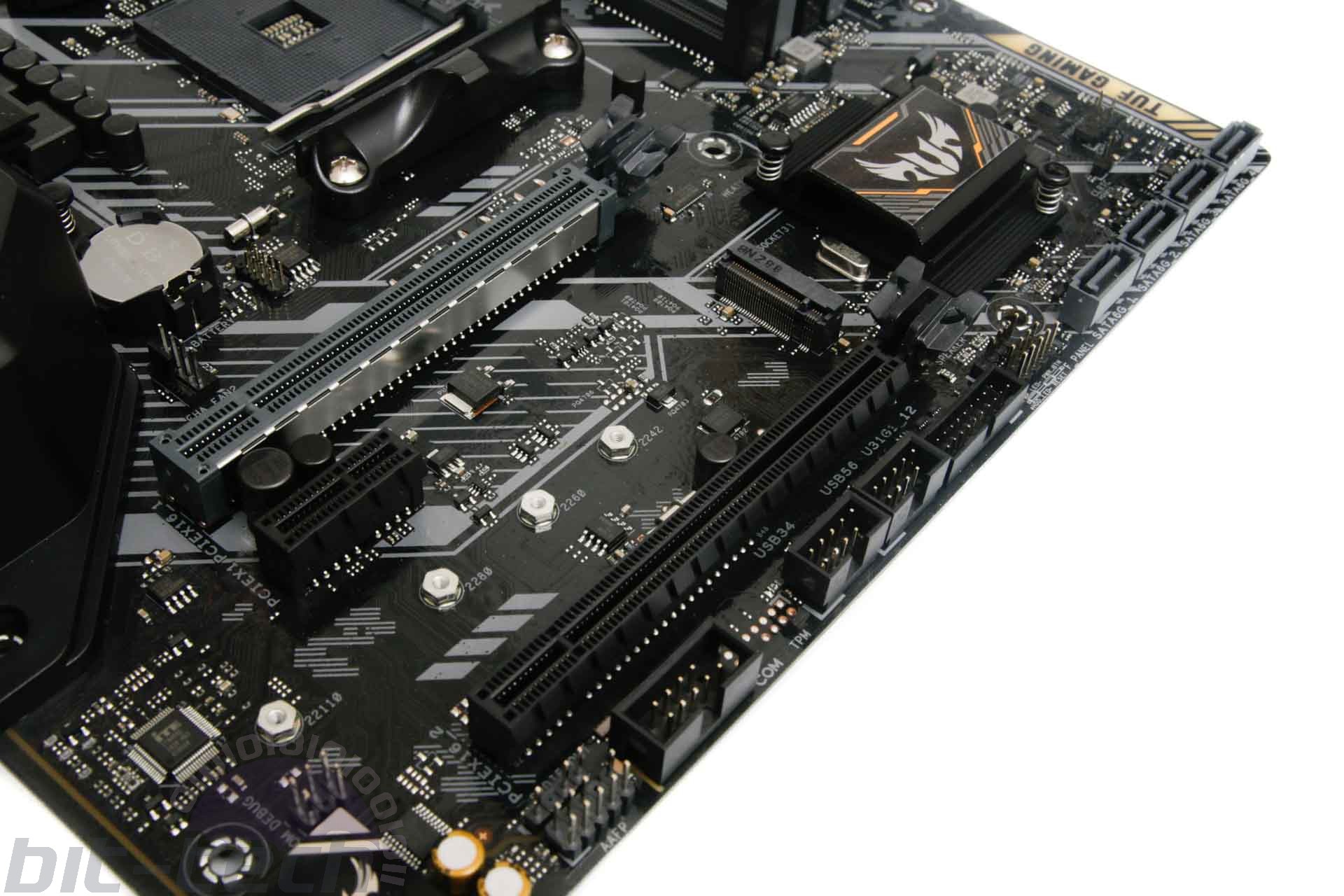
There's a single M.2 port, which is to be expected at this price, but it does at least support both PCIe 3.0 x4 NVMe SSDs as well as SATA 6Gbps ones, but obviously no PCIe 4.0. Update 26/09/19: As of BIOS version 1814, Asus has removed support for PCIe 4.0, something which was actually added in an earlier BIOS. Our board was tested using an earlier BIOS, but we pulled the specs/original review from the manufacturer website which listed only PCIe 3.0 support. We have reached out to Asus to ask why support was removed and if/when it will return - apologise for any confusion. There's no heatsink either, but for most situations, this is an aesthetic luxury and not a necessity. Below you can see there's a generous six SATA 6Gbps ports too, so if you have a mix of hard disk transplants from your old system then you shouldn't be left wanting.

Onboard cooling isn't particularly lavish for the six-phase power delivery, so it will be interesting to see how things hold up under load, which you can read about in our performance section on the last page. Other features are fairly basic with a bare minimum three fan headers, although these are at least well-placed for the CPU, rear, and front fans. It does mean, however, that you'll need splitter cables or a case fan hub to use more than two case fans. You also get a single four-pin RGB header should you wish to add some lighting, as there is precious little on the board itself, with just the TUF Gaming logo above lighting up.
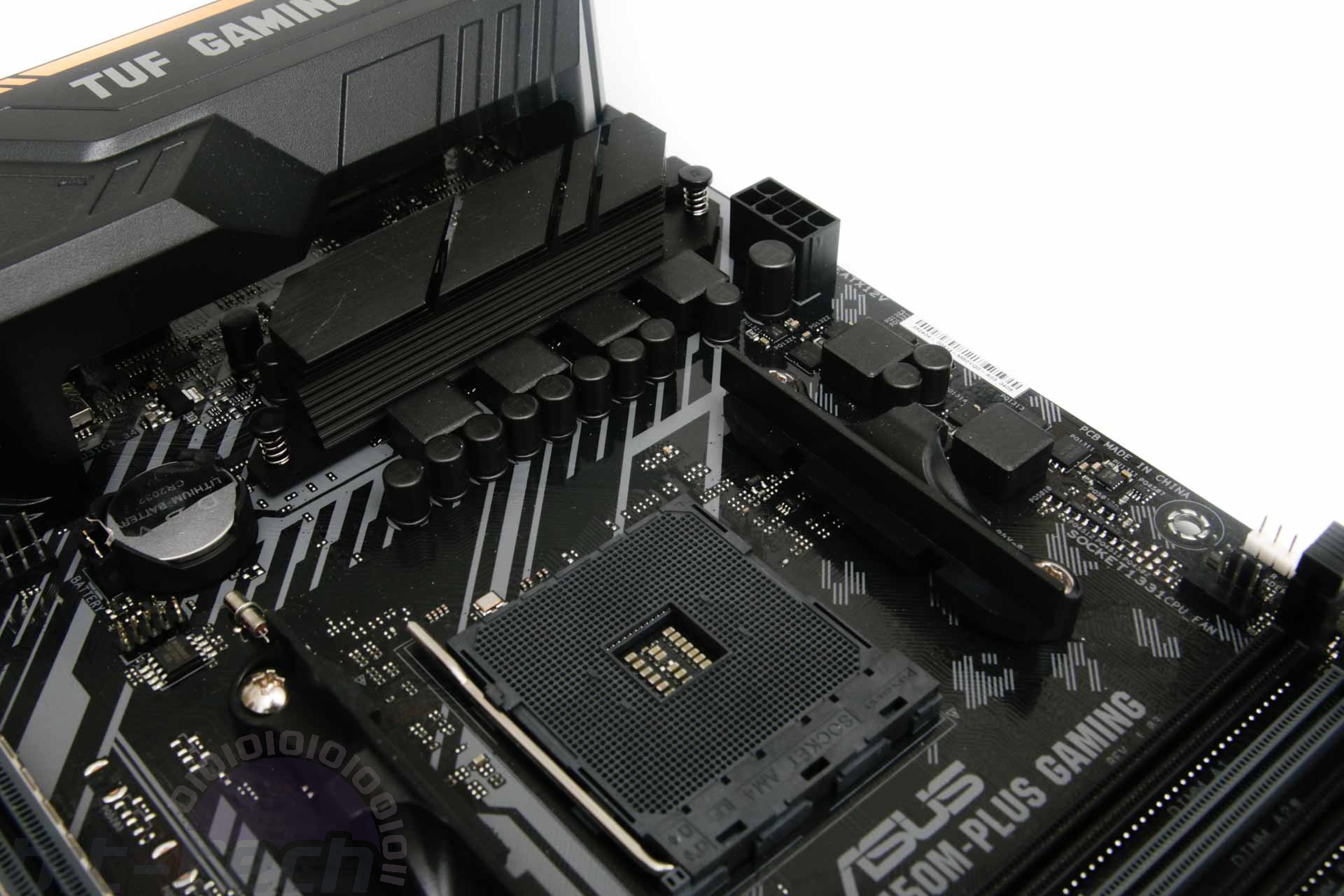
The rear I/O panel is somewhat sparsely populated with DVI-D and HDMI outputs should you wish to drop in an APU instead of discrete graphics, but there are only five Type-A USB ports with just three of these rated at USB 3.0 or above - probably enough for most, but if you have external storage drives, card readers, headsets, and other peripherals needing homes then things could be a little tight.
The onboard Realtek ALC887 audio codec is an expected sacrifice at this price, and it's worth noting the trio of audio ports, which actually support up to 5.1-channel speaker systems by reassigning the microphone input, but for more than this you'll need to bring your case's audio port and the onboard audio header into play. There is a Type-C USB port too, but this will only operate at USB 3.0 speed.
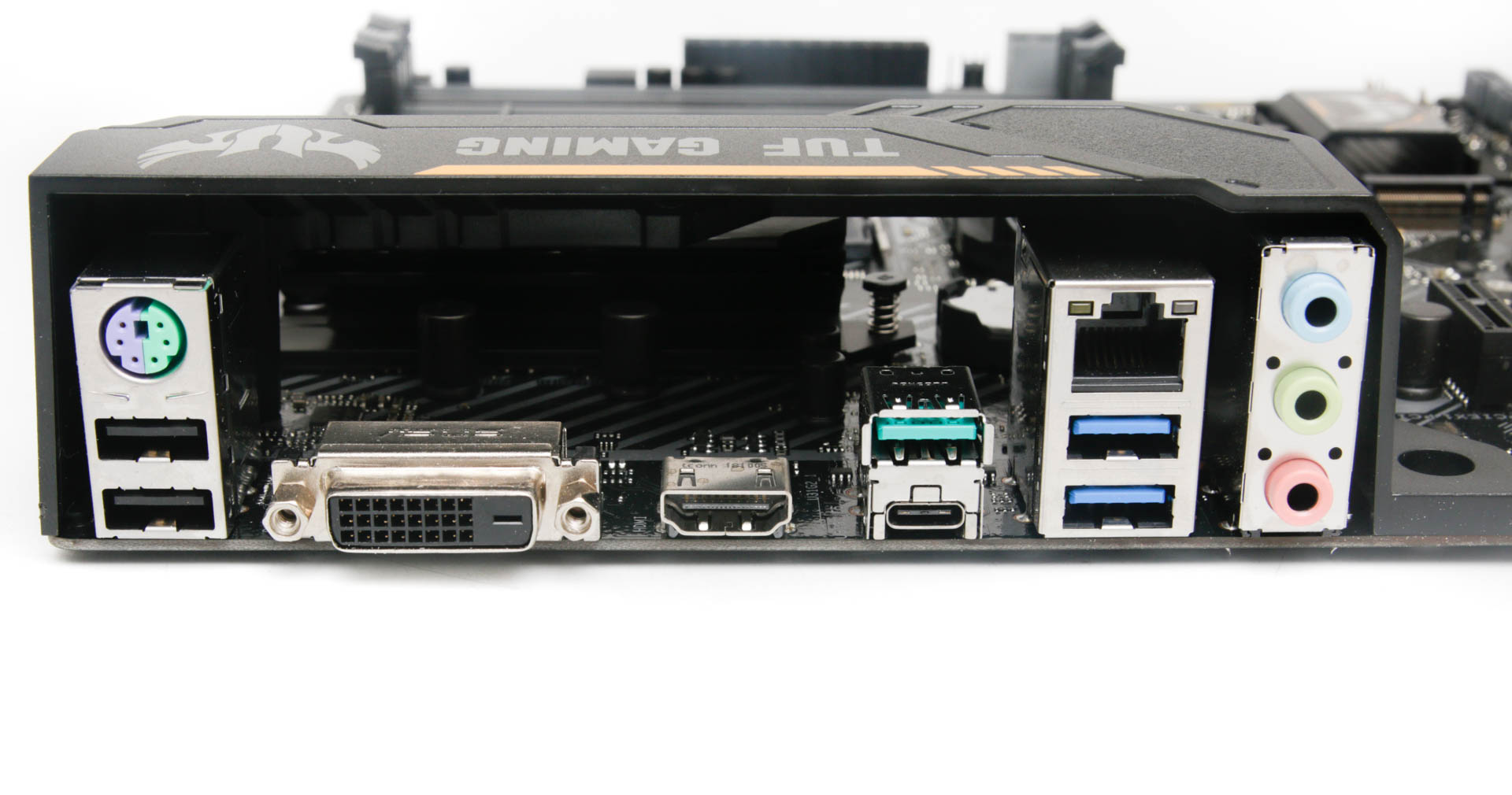
Specifications
- Chipset AMD B450
- Form factor Micro-ATX
- CPU support AMD Socket AM4
- Memory support Dual-channel, four slots, max 64GB
- Sound Eight-channel Realtek ALC887
- Networking 1 x Realtek Gigabit Ethernet
- Ports 1 x M.2 PCIe 3.0 x4 32Gbps/SATA 6Gbps up to 22110, 6 x SATA 6Gbps, 1 x USB 3.1 Type-A, 1 x USB 3.0 Type-C, 4 x USB 3.0 (2 via headers), 6 x USB 2.0 (4 via headers), 1 x LAN, audio out, line in, mic, Optical S/PDIF out, 2 x two-pin thermal probe headers
- Dimensions (mm) 244 x 244
- Extras None

MSI MPG Velox 100R Chassis Review
October 14 2021 | 15:04

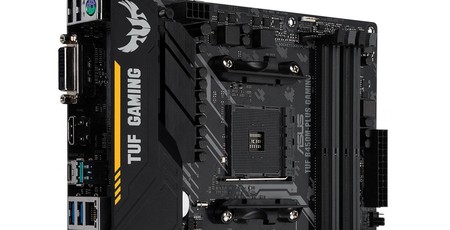
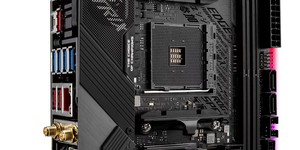
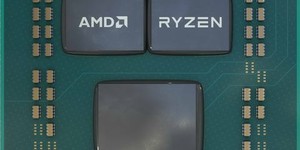
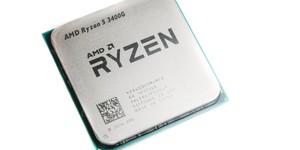




Want to comment? Please log in.